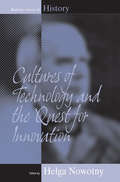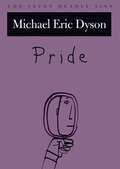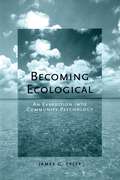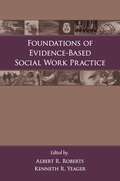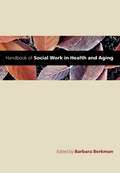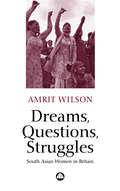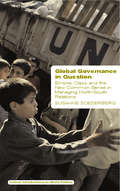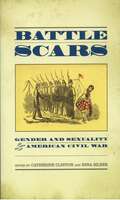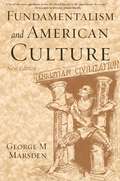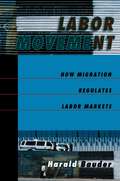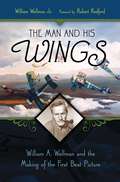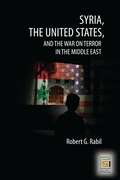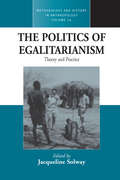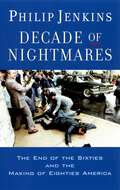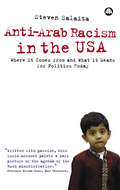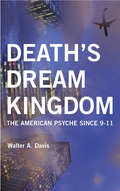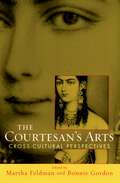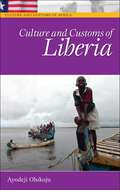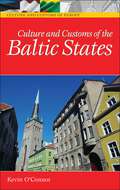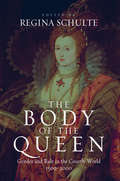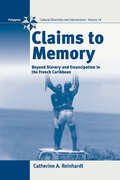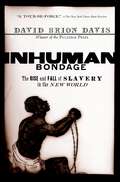- Table View
- List View
Cultures of Technology and the Quest for Innovation (Making Sense of History #9)
by Helga NowotnyUnderlying the current dynamics of technological developments, their divergence or convergence and the abundance of options, promises and risks they contain, is the quest for innovation, the contributors to this volume argue. The seemingly insatiable demand for novelty coincides with the rise of modern science and the onset of modernity in Western societies. Never before has the Baconian dream been so close to becoming reality: wrapped into a globalizing capitalism that seeks ever expanding markets for new products, artifacts and designs and new processes that lead to gains in efficiency, productivity and profit. However, approaching these developments through a wider historical and cultural perspectives, means to raise questions about the plurality of cultures, the interaction between "hardware" and "software" and about the nature of the interfaces where technology meets with economic, social, legal, historical constraints and opportunities. The authors come to the conclusion that inside a seemingly homogenous package and a seemingly universal quest for innovation many differences remain.
Pride: The Seven Deadly Sins (New York Public Library Lectures in Humanities)
by Michael Eric DysonOf the seven deadly sins, pride is the only one with a virtuous side. It is certainly a good thing to have pride in one's country, in one's community, in oneself. But when taken too far, as Michael Eric Dyson shows in Pride, these virtues become deadly sins. Dyson, named by Ebony magazine as one of the 100 most influential African Americans, here looks at the many dimensions of pride. Ranging from Augustine and Aquinas, MacIntyre and Hauerwas, to Niebuhr and King, Dyson offers a thoughtful, multifaceted look at this "virtuous vice." He probes the philosophical and theological roots of pride in examining its transformation in Western culture. Dyson discusses how black pride keeps blacks from being degraded and excluded by white pride, which can be invisible, unspoken, but nonetheless very powerful. Dyson also offers a moving glimpse into the teachers and books that shaped his personal pride and vocation. Dyson also looks at less savory aspects of national pride. Since 9/11, he notes, we have had to close ranks. But the collective embrace of all things American, to the exclusion of anything else, has taken the place of a much richer, much more enduring, much more profound version of love of country. This unchecked pride asserts the supremacy of America above all others--elevating our national beliefs above any moral court in the world--and attacking critics of American foreign policy as unpatriotic and even traitorous. Hubris, temerity, arrogance--the unquestioned presumption that one's way of life defines how everyone else should live--pride has many destructive manifestations. In this engaging and energetic volume, Michael Eric Dyson, one of the nation's foremost public intellectuals, illuminates this many-sided human emotion, one that can be an indispensable virtue or a deadly sin.
Becoming Ecological: An Expedition into Community Psychology
by James G. KellyCommunity psychology emphasizes an ecological approach to mental health by focusing on the individual in the environment and the influences that shape and change behavior. Becoming Ecological brings together the work of James G. Kelly, one of the founders of community psychology and among the field's national leaders. The volume unites thirteen of Kelly's publications from 1968 to 2002 as well as four new essays on current issues in the field: the theory, research, practice, and education of community psychologists. Kelly introduces the work by offering connections between his personal experiences and the topics he chose to focus on throughout his long career. He begins each of the thirteen essays with commentary that sets the article in its original context so that the reader has a historical perspective on why certain ideas were salient at a particular time and how they are still timely today. Kelly concludes with a "summing up" section integrating the previously published articles with the four new essays. Throughout, he presents examples of how to plan and carry out research and practice in the community. The principles underlying the examples both enhance the relevance of the research and practice and increase the potential of community residents to use the findings for their own purposes. A compendium of classic statements of community psychology's philosophical and historical underpinnings, Becoming Ecological is a must-read for scholars and practitioners of community psychology and for those in the fields of public health, social work, community development, education, and applied anthropology.
Foundations of Evidence-Based Social Work Practice
by Albert R. Roberts Kenneth R. YeagerThis concise introduction to evidence-based social work is a student-friendly overview of the issues and methods most frequently encountered while preparing for evidence-based social work practice. Part I defines terms and critical issues, introducing students to the language and importance of evidence-based practice and critical thinking. Chapters will explain how to search for and evaluate evidence, how to ask the right questions, how to develop standards, and how to make use of the best research. Part II illustrates practical applications, including such topics as cognitive-behavioral approaches to suicide risks, manualized treatment with children, treating juvenile delinquents, and interventions for OCD, anxiety disorders, substance abuse, PTSD, depression, and recovery. This much-needed overview familiarizes students with the process and practice of evidence-based social work, teaching them to be critical thinkers and judicious decision-makers. The guidelines it distills are equally valuable to seasoned practitioners seeking to better serve their clients, making this an excellent foundation for the study and practice of evidence-based social work.
Handbook of Social Work in Health and Aging
by Barbara BerkmanThe Handbook of Social Work in Health and Aging is the first reference to combine the fields of health care, aging, and social work in a single, authoritative volume. These areas are too often treated as discrete entities, while the reality is that all social workers deal with issues in health and aging on a daily basis, regardless of practice specialization. As the baby boomers age, the impact on practice in health and aging will be dramatic, and social workers need more specialized knowledge about aging, health care, and the resources available to best serve older adults and their families. The volume's 102 original chapters and 13 overviews, written by the most experienced and prominent gerontological health care scholars in the United States and across the world, provide social work practitioners and educators with up-to-date knowledge of evidence-based practice guidelines for effectively assessing and treating older adults and their families; new models for intervention in both community-based practice and institutional care; and knowledge of significant policy and research issues in health and aging. A truly monumental resource, this handbook represents the best research on health and aging available to social workers today.
Dreams, Questions, Struggles: South Asian Women in Britain
by Amrit WilsonFrom schoolgirls to matriarchs, single mothers to extended families, and businesswomen to factory workers, the experience of Asian women in Britain today is polarised by class and religion. *BR**BR*This book explores the lives and struggles of two generations of British Asian women to present a political account of their experiences: personal and public, individual and collective, their struggles take on power structures within the family, the community and, on occasion, the British state. *BR**BR*Combining their personal testimony within a theoretical framework, Amrit Wilson locates their experiences in the wider context of global and regional politics. She examines what impact the feminist movement has had on their lives, and explores issues such as domestic violence, Asian marriages, representations of Asian women, mental disturbance and suicide.*BR*
Global Governance in Question: Empire, Class and the New Common Sense in Managing North-South Relations (Critical Introductions to World Politics)
by Susanne SoederbergLike many buzzwords, 'global governance' is as poorly understood as it is popular. In contrast to most mainstream accounts, this book examines global economic governance as an integral moment of contemporary capitalism, presenting a critical insight into its real nature and the interests that it serves. *BR**BR*This book begins by asking what has not been discussed in the mainstream debates and why. Drawing on a Marxist perspective, Susanne Soederberg explores neglected issues including transnational debt and the increasingly coercive nature of US aid to so-called ‘failed states'. *BR**BR*She argues that mainstream understandings fail to engage with the wider contradictions that characterise global capitalism. In consequence, there is no explanation of the changing nature of American empire and capitalist power in the world.
Battle Scars: Gender and Sexuality in the American Civil War
by Catherine Clinton Nina SilberOver a decade ago, the publication of Divided Houses ushered in a new field of scholarship on gender and the Civil War. Following in its wake, Battle Scars showcases insights from award-winning historians as well as emerging scholars. This volume depicts the ways in which gender, race, nationalism, religion, literary culture, sexual mores, and even epidemiology underwent radical transformations from when Americans went to war in 1861 through Reconstruction. Examining the interplay among such phenomena as racial stereotypes, sexual violence, trauma, and notions of masculinity, Battle Scars represents the best new scholarship on men and women in the North and South and highlights how lives were transformed by this era of tumultuous change.
Fundamentalism and American Culture
by George M. MarsdenMany American's today are taking note of the surprisingly strong political force that is the religious right. Controversial decisions by the government are met with hundreds of lobbyists, millions of dollars of advertising spending, and a powerful grassroots response. How has the fundamentalist movement managed to resist the pressures of the scientific community and the draw of modern popular culture to hold on to their ultra-conservative Christian views? Understanding the movement's history is key to answering this question. Fundamentalism and American Culture has long been considered a classic in religious history, and to this day remains unsurpassed. Now available in a new edition, this highly regarded analysis takes us through the full history of the origin and direction of one of America's most influential religious movements. For Marsden, fundamentalists are not just religious conservatives; they are conservatives who are willing to take a stand and to fight. In Marsden's words (borrowed by Jerry Falwell), "a fundamentalist is an evangelical who is angry about something." In the late nineteenth century American Protestantism was gradually dividing between liberals who were accepting new scientific and higher critical views that contradicted the Bible and defenders of the more traditional evangelicalism. By the 1920s a full-fledged "fundamentalist" movement had developed in protest against theological changes in the churches and changing mores in the culture. Building on networks of evangelists, Bible conferences, Bible institutes, and missions agencies, fundamentalists coalesced into a major protest movement that proved to have remarkable staying power. For this new edition, a major new chapter compares fundamentalism since the 1970s to the fundamentalism of the 1920s, looking particularly at the extraordinary growth in political emphasis and power of the more recent movement. Never has it been more important to understand the history of fundamentalism in our rapidly polarizing nation. Marsen's carefully researched and engrossing work remains the best way to do just that.
Labor Movement: How Migration Regulates Labor Markets
by Harald BauderThroughout the industrialized world, international migrants serve as nannies, construction workers, gardeners and small-business entrepreneurs. Labor Movement suggests that the international migration of workers is necessary for the survival of industrialized economies. The book thus turns the conventional view of international migration on its head: it investigates how migration regulates labor markets, rather than labor markets shaping migration flows. Assuming a critical view of orthodox economic theory, the book illustrates how different legal, social and cultural strategies towards international migrants are deployed and coordinated within the wider neo-liberal project to render migrants and immigrants vulnerable, pushing them into performing distinct economic roles and into subordinate labor market situations. Drawing on social theories associated with Pierre Bourdieu and other prominent thinkers, Labor Movement suggests that migration regulates labor markets through processes of social distinction, cultural judgement and the strategic deployment of citizenship. European and North American case studies illustrate how the labor of international migrants is systematically devalued and how popular discourse legitimates the demotion of migrants to subordinate labor. Engaging with various immigrant groups in different cities, including South Asian immigrants in Vancouver, foreigners and Spätaussiedler in Berlin, and Mexican and Caribbean offshore workers in rural Ontario, the studies seek to unravel the complex web of regulatory labor market processes related to international migration. Recognizing and understanding these processes, Bauder argues, is an important step towards building effective activist strategies and for envisioning new roles for migrating workers and people. The book is a valuable resource to researchers and students in economics, ethnic and migration studies, geography, sociology, political science, and to frontline activists in Europe, North America and beyond.
The Man and His Wings: William A. Wellman and the Making of the First Best Picture
by William Wellman Jr.William Wild Bill Wellman was not Paramount Pictures' first choice to direct the World War I epic Wings (1927), but as a former aviator and war hero, he was the right choice. Despite months waging epic battles of his own with studio executives, Wild Bill managed to finish the big-budget war saga by inventing many of the techniques still used to film aerial battle scenes. The film, starring Clara Bow, broke box office records and earned its studio the first Academy Award for Best Picture. Considered by many to be the last great film of the silent era, Wings has been cited as a major influence on such directors as Martin Scorsese and Robert Redford. Its director, who went on to direct the likes of John Wayne, James Cagney, and Gary Cooper, later earned an Oscar for writing one of Hollywood's most loved (and often remade) films, A Star is Born. In this biography, the director's son, William Wellman Jr., reveals the war hero, family man, occasional prankster, and underestimated visionary who changed Hollywood forever.Augmented with personal correspondence from Wellman's own World War I tour of duty as a fighter pilot, on-set photographs from Wings and other classic Hollywood films, and anecdotes from the back lots of the early studio system, this unique work traces the way in which the first Best Picture's director used his own war experience to bring a war epic to the screen. The versatile director also excelled at comedies such as Nothing Sacred (1937), and had a lasting influence on the gangster genre with The Public Enemy (1931), starring James Cagney. With the recent release of Wellman's later aviation classics, Island in the Sky (1953) and The High and the Mighty (1954), both starring John Wayne, Wellman is gaining renewed attention and appreciation from a new generation of film enthusiasts. The book ends with a detailed Filmography of more than 75 classic films directed by Wellman.
Syria, the United States, and the War on Terror in the Middle East (Praeger Security International)
by Robert G. RabilEver since Syria won its independence from France in 1946, it has been a crucial player in Middle Eastern politics. Over the years, relations between the United States and Syria have fluctuated as Washington has tried to balance its commitment to Israel's security with its support for Arab regimes in order to protect vital and strategic interests in the Arab world. The Arab-Israeli conflict is, however. no longer the only focal point of the relationship. Now, terrorism has entered the fray. On the State Department's terrorism list since 1979, Syria became even more persona non grata as far as Washington was concerned when Damascus vocally opposed the U.S. invasion of Iraq in 2003. The American war in Iraq, occupation, and promotion of democracy throughout the Middle East pose a strong challenge to the Syrian regime. The new Syrian leadership, in power only since 2000, faces immense challenges—protecting Syria's regional status and surviving internal and external threats. Against this background, Syria and the United States have set themselves on a collision course over terrorism, arms proliferation, Lebanon, the Middle East peace process, and Iraq. Syria is, nevertheless, extremely important to the United States, because it can be a force for either stability or instability in an extremely volatile region.Recent events have put the spotlight on Syria's policies and actions. After the assassination of a Lebanese politician, protests in Lebanon led to the withdrawal of Syrian troops. While the withdrawal averted an immediate threat of bloodshed, the Bush administration accused Syria of being a source of instability in the Middle East, with Secretary of State Rice charging that Syria was still active in Lebanon and was supporting foreign terrorists fueling the insurgency in Iraq. The U.S.-Syrian relationship is of critical importance to the United States' efforts to promote democracy throughout the Middle East. At the same time, the United States has been pressuring Syria to clamp down on terrorism within its own borders. Rabil provides a history of the modern U.S.-Syrian relationship, putting the latest events in the context of this contemporary history, and placing the relationship in the context of Middle Eastern politics.
The Politics of Egalitarianism: Theory and Practice (Methodology & History in Anthropology #14)
by Jacqueline SolwayThe essays assembled in this book exemplify the way political anthropologists address a range of problems that deeply affect people throughout the world. The authors draw their inspiration from the work of Canadian anthropologist Richard B. Lee, and, like him, they are concerned with understanding and acting upon issues of “indigenous rights”; the impact of colonialism, postcolonial state formation, and neoliberalism on local communities and cultures; the process of culture change; what the history and politics of egalitarian societies reveal about issues of “human nature” or “social evolution”; and how peoples in southern Africa are affected by and responding to the most recent crisis in their midst, the spread of AIDS. The authors in this volume discuss the state of a range of contemporary debates in the field that in various ways extend the political, theoretical, and empirical issues that have animated Lee's work. In addition, the book provides readers with important contemporary Kalahari studies, as well as “classic” works on foraging societies.
Visions of England: Class and Culture in Contemporary Cinema (Talking Images)
by Paul DaveVisions of England is a provocative and original exploration ofEnglishness, in particular English class, in contemporary cinema. Classhas been a central part, whether consciously or not, of much of Englishsocial analysis and artistic production for over a century. But as away of interpreting society, class has found itself sidelined in apostmodern world. Visions of England presents a detailed analysis ofthe changing landscape of English class and culture.Visions of England explores a wide range of film production - fromgangster thrillers like Lock, Stock Two Smoking Barrels to the periodcinema of Elizabeth, from cult classics like Performance andTrainspotting to the mainstream romantic comedy of Notting Hill andBridget Jones, from the social realist drama of Billy Elliot and TheFull Monty to the multicultural comedy of Bend it like Beckham, and theexperimentalism of films such as London Orbital and Robinson in Space.An extraordinarily wide-ranging and incisive study, Visions of Englandrewrites the relationship of film and Englishness.
Women in Polish Cinema
by Ewa Mazierska Elzbieta OstrowskaPolish film has long enjoyed an outstanding reputation but its best known protagonists tend to be male. This book points to the important role of women as key characters in Polish films, such as the enduring female figure in Polish culture, the "Polish Mother," female characters in socialist realistic cinema, women depicted in the films of the Polish School, Solidarity heroines, and women in the films from the postcommunist period. Not less important for the success of Polish cinema are Polish women filmmakers, four of whom are presented in this volume: Wanda Jakubowska, Agnieszka Holland, Barbara Sass and Dorota Kędzierzawska, whose work is examined.
Decade of Nightmares: The End of the Sixties and the Making of Eighties America
by Philip JenkinsWhy did the youthful optimism and openness of the sixties give way to Ronald Reagan and the spirit of conservative reaction--a spirit that remains ascendant today? Drawing on a wide array of sources--including tabloid journalism, popular fiction, movies, and television shows--Philip Jenkins argues that a remarkable confluence of panics, scares, and a few genuine threats created a climate of fear that led to the conservative reaction. He identifies 1975 to 1986 as the watershed years. During this time, he says, there was a sharp increase in perceived threats to our security at home and abroad. At home, America seemed to be threatened by monstrous criminals--serial killers, child abusers, Satanic cults, and predatory drug dealers, to name just a few. On the international scene, we were confronted by the Soviet Union and its evil empire, by OPEC with its stranglehold on global oil, by the Ayatollahs who made hostages of our diplomats in Iran. Increasingly, these dangers began to be described in terms of moral evil. Rejecting the radicalism of the '60s, which many saw as the source of the crisis, Americans adopted a more pessimistic interpretation of human behavior, which harked back to much older themes in American culture. This simpler but darker vision ultimately brought us Ronald Reagan and the ascendancy of the political Right, which more than two decades later shows no sign of loosening its grip. Writing in his usual crisp and witty prose, Jenkins offers a truly original and persuasive account of a period that continues to fascinate the American public. It is bound to captivate anyone who lived through this period, as well as all those who want to understand the forces that transformed--and continue to define--the American political landscape.
Anti-Arab Racism in the USA: Where It Comes From and What It Means For Politics Today
by Steven SalaitaToday is a difficult time to be both Arab and American. Since 9/11 there has been a lot of criticism of America’s involvement in the middle east. Yet there has been little analysis of how America treats citizens of Arab or middle eastern origin within its own borders. *BR**BR*Steven Salaita explores the reality of Anti-Arab racism in America. He blends personal narrative, theory and polemics to show how this deep-rooted racism affects everything from legislation to cultural life, shining a light on the consequences of Anti-Arab racism both at home and abroad.*BR**BR*The book shows how ingrained racist attitudes can be found within the progressive movements on the political left, as well as the right. Salaita argues that, under the guise of patriotism, Anti-Arab racism fuels support for policies such as the Patriot Act.
Death's Dream Kingdom: The American Psyche Since 9-11
by Walter A. DavisWhy is fear a dominant emotion in contemporary society? Why are politicians using words like 'terror', 'evil' and 'fundamentalism', and what effect is it having on public consciousness?*BR**BR*This book taps into the cultural psyche to explore the link between ideology and emotional and psychological manipulation. It shows that the Bush administration has been hugely successful in controlling and developing a new political climate through the creation of an almost hypnotic mass consciousness. *BR**BR*From the sado-masochist hysteria of Mel Gibson's The Passion of the Christ‚ to the atrocities at Abu Ghraib prison; and from the genocidal use of depleted uranium in Iraq to the apocalyptic language driving the Christian Right's assault on basic human rights.*BR**BR*Davis's findings take us to the heart of the ideological paralysis of the Left, while offering an innovative approach to understanding contemporary history.
The Courtesan's Arts: Cross-Cultural Perspectives
by Martha Feldman Bonnie GordonCourtesans, hetaeras, tawaif-s, ji-s--these women have exchanged artistic graces, elevated conversation, and sexual favors with male patrons throughout history and around the world. Of a different world than common prostitutes, courtesans deal in artistic and intellectual pleasures in ways that are wholly interdependent with their commerce in sex. In pre-colonial India, courtesans cultivated a wide variety of artistic skills, including magic, music, and chemistry. In Ming dynasty China, courtesans communicated with their patrons through poetry and music. Yet because these cultural practices have existed primarily outside our present-day canons of art and have often occurred through oral transmission, courtesans' arts have vanished almost without trace. The Courtesan's Arts delves into this hidden legacy, unveiling the artistic practices and cultural production of courtesan cultures with a sideways glance at the partly-related geisha. Balancing theoretical and empirical research, this interdisciplinary collection is the first of its kind to explore courtesan cultures through diverse case studies--the Edo period and modern Japan, 20th-century Korea, Ming dynasty China, ancient Greece, early modern Italy, and India, past and present. Each essay puts forward new perspectives on how the arts have figured in the courtesan's survival or demise. Though performative and often flamboyant, courtesans have been enigmatic and elusive to their beholders--including scholars. They have shaped cultures through art, yet their arts, often intangible, have all but faded from view. Often courtesans have hovered in the crevices of space, time, and practice--between gifts and money, courts and cities, feminine allure and masculine power, as substitutes for wives but keepers of culture. Reproductively irrelevant, they have tended to be ambiguous figures, thriving on social distinction while operating outside official familial relations. They have symbolized desirability and sophistication yet often been reviled as decadent. The Courtesan's Arts shows that while courtesans cultures have appeared regularly in various times and places, they are universal neither as a phenomenon nor as a type. To the contrary, when they do crop up, wide variations exist. What binds together courtesans and their arts in the present-day post-industrialized world of global services and commodities is their fragility. Once vital to cultures of leisure and pleasure, courtesans are now largely forgotten, transformed into national icons or historical curiosities, or reduced to prostitution.
Culture and Customs of Liberia (Culture and Customs of Africa)
by Ayodeji OlukojuLiberia has a strong connection to the United States in that it was founded by former slaves in 1822. Although Liberia had existed as an independent African nation and a symbol of hope to the African peoples under the rule of various colonial powers, its recent history has been bedeviled by a prolonged upheaval following a military coup d'etat in 1980. In this context, the narrative highlights the distinctiveness of Liberians in their negotiation of traditional indigenous and modern practices, and the changes wrought by Christianity and Western influences.
Culture and Customs of the Baltic States (Culture and Customs of Europe)
by Kevin C. Ph.D.The Baltic States of Estonia, Latvia, and Lithuania are thriving after hundreds of years of German colonization, numerous wars of conquest, and demographic Russification. Their cultures have survived, perhaps through a conscious effort to sustain many of their most ancient customs and traditions. Though the Baltic States are responding to modern and postmodern international trends, contemporary developments in the region's cultural life are part of an ongoing conversation about the way in which the Balts understand their histories, destinies, and national identities. This timely overview of the reemerging states portrays the Estonians, Latvians, and Lithuanians as they see themselves—through a historical lens.The Baltic States of Estonia, Latvia, and Lithuania are thriving after hundreds of years of German colonization, numerous wars of conquest, and demographic Russification. Their cultures have survived, perhaps through a conscious effort to sustain many of their most ancient customs and traditions. Though the Baltic States are responding to modern and postmodern international trends, contemporary developments in the region's cultural life are part of an ongoing conversation about the way in which the Balts understand their own histories, destines, and national identities. This timely overview of the reemerging states portrays the Estonians, Latvians, and Lithuanians as they see themselves—through a historical lens.The approach in each of the topical chapters is to generalize what is common among the three states and then to focus on each country in turn. Chapters on the land, people, and history; religion; marriage, family, gender, and education; holidays, cuisine, and leisure activities; language, folklore, and literature; media and cinema; performing arts; and art are a superb introduction to the Baltics and to the unique aspects of the countries. Lithuania's culture has been heavily influenced by Poland, and the capital, Vilnius, was a thriving center of Jewish learning until the Nazi years. Latvia is the most ethnically diverse and Russian-influenced. Estonia sees itself as a European country, indeed, Scandinavian.
Locked Out: Felon Disenfranchisement and American Democracy (Studies in Crime and Public Policy)
by Jeff Manza Christopher Uggen5.4 million Americans--1 in every 40 voting age adults-- are denied the right to participate in democratic elections because of a past or current felony conviction. In several American states, 1 in 4 black men cannot vote due to a felony conviction. In a country that prides itself on universal suffrage, how did the United States come to deny a voice to such a large percentage of its citizenry? What are the consequences of large-scale disenfranchisement--both for election outcomes, and for public policy more generally? Locked Out exposes one of the most important, yet little known, threats to the health of American democracy today. It reveals the centrality of racial factors in the origins of these laws, and their impact on politics today. Marshalling the first real empirical evidence on the issue to make a case for reform, the authors' path-breaking analysis will inform all future policy and political debates on the laws governing the political rights of criminals.
The Body of the Queen: Gender and Rule in the Courtly World, 1500-2000
by Regina SchulteHow many “bodies” does a queen have? What is the significance of multiple “bodies”? How has the gendered body been constructed and perceived within the context of the European courts during the course of the past five centuries? These are some of the questions addressed in this anthology, a contribution to the ongoing debate provoked by Ernst H. Kantorowicz in his seminal work from 1957, The King’s Two Bodies. On the basis of both textual self-presentations and visual representations a gradual transformation of the queen appears: A sacred/providential figure in medieval and early modern period, an ideal bourgeois wife during the late-18th and 19th Centuries, and a star-like (re-) presentation of royalty during the past century. Twentieth-century mass media has produced the celebrity and film star queens personified by the contested and enigmatic Nefertiti of ancient Egypt, the mysterious Elizabeth (Sisi) of Austria, Grace Kelly as Queen of both Hollywood and Monaco and Romy Schneider as the invented Empress.
Claims to Memory: Beyond Slavery and Emancipation in the French Caribbean (Polygons: Cultural Diversities and Intersections #10)
by Catherine ReinhardtWhy do the people of the French Caribbean still continue to be haunted by the memory of their slave past more than one hundred and fifty years after the abolition of slavery? What process led to the divorce of their collective memory of slavery and emancipation from France's portrayal of these historical phenomena? How are Martinicans and Guadeloupeans today transforming the silences of the past into historical and cultural manifestations rooted in the Caribbean? This book answers these questions by relating the 1998 controversy surrounding the 150th anniversary of France's abolition of slavery to the period of the slave regime spanning the late Enlightenment and the French Revolution. By comparing a diversity of documents—including letters by slaves, free people of color, and planters, as well as writings by the philosophes, royal decrees, and court cases—the author untangles the complex forces of the slave regime that have shaped collective memory. The current nationalization of the memory of slavery in France has turned these once peripheral claims into passionate political and cultural debates.
Inhuman Bondage: The Rise and Fall of Slavery in the New World
by David Brion DavisDavid Brion Davis has long been recognized as the leading authority on slavery in the Western World. His books have won every major history award--including the Pulitzer Prize and the National Book Award--and he has been universally praised for his prodigious research, his brilliant analytical skill, and his rich and powerful prose. Now, in Inhuman Bondage, Davis sums up a lifetime of insight in what Stanley L. Engerman calls "a monumental and magisterial book, the essential work on New World slavery for several decades to come." Davis begins with the dramatic Amistad case, which vividly highlights the international character of the Atlantic slave trade and the roles of the American judiciary, the presidency, the media, and of both black and white abolitionists. The heart of the book looks at slavery in the American South, describing black slaveholding planters, the rise of the Cotton Kingdom, the daily life of ordinary slaves, the highly destructive internal, long-distance slave trade, the sexual exploitation of slaves, the emergence of an African-American culture, and much more. But though centered on the United States, the book offers a global perspective spanning four continents. It is the only study of American slavery that reaches back to ancient foundations (discussing the classical and biblical justifications for chattel bondage) and also traces the long evolution of anti-black racism (as in the writings of David Hume and Immanuel Kant, among many others). Equally important, it combines the subjects of slavery and abolitionism as very few books do, and it illuminates the meaning of nineteenth-century slave conspiracies and revolts, with a detailed comparison with 3 major revolts in the British Caribbean. It connects the actual life of slaves with the crucial place of slavery in American politics and stresses that slavery was integral to America's success as a nation--not a marginal enterprise. A definitive history by a writer deeply immersed in the subject, Inhuman Bondage offers a compelling narrative that links together the profits of slavery, the pain of the enslaved, and the legacy of racism. It is the ultimate portrait of the dark side of the American dream. Yet it offers an inspiring example as well--the story of how abolitionists, barely a fringe group in the 1770s, successfully fought, in the space of a hundred years, to defeat one of human history's greatest evils.
